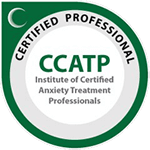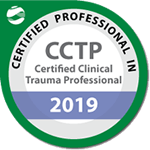

Obsessive-Compulsive Disorder (OCD) is an anxiety disorder characterized by recurrent, often highly debilitating symptoms, consisting of mental obsessions and habitual compulsions. The most recent research in the field of OCD has shown that proper diagnosis and treatment can bring effective relief to those clients brave enough to face their fears using a treatment called Exposure and Response Prevention Therapy.
Obsessions are intrusive and unwanted thoughts, ideas or images that won’t go away and cause extreme distress. Common obsessions include an extreme need for order and organization, repeated doubts as to whether or not you did something (like turned the burner off or locked your door) or disturbing thoughts about the health and safety of a loved one. You also may worry constantly about unlikely scenarios, such as being contaminated by a deadly bacteria, running someone over with your car or contracting a terminal disease.
Compulsions are behaviors that you feel you must carry out repeatedly, usually in order to ward off any potential negative effects related to your obsessive thoughts. For instance, if you experience obsessive thoughts about being contaminated by a deadly bacteria, you may feel compelled to wash your hands very frequently, over and over again. Other common compulsions include cleaning, checking, counting, requesting reassurance and forcing order or symmetry of belongings.
OCD manifests quite differently among different people. There are many OCD subtypes and the focus, obsessions and compulsions can vary greatly from one person to the next.
Exposure and Response Prevention is the technique of choice for OCD. ERP has been shown through extensive research to be the most effective treatment option to minimize or even eliminate OCD symptoms.
The Exposure in ERP refers to exposing yourself to the thoughts, images, objects and situations that make you anxious and/or start your obsessions. While the Response Prevention part of ERP refers to making a choice not to do a compulsive behavior once the anxiety or obsessions have been “triggered.” All of this is done under the guidance of a therapist at the beginning — though you will eventually learn to do your own ERP exercises to help manage your symptoms.
That said, this strategy of intentionally exposing yourself to things that make you anxious may sound very scary to you. If you have OCD, you have probably tried to confront your obsessions and anxiety many times only to see your anxiety skyrocket. With ERP, the difference is that when you make the choice to confront your anxiety and obsessions you must also make a commitment to not give in and engage in the compulsive behavior. When you don’t do the compulsive behaviors, over time you will actually feel a drop in your anxiety level. This natural drop in anxiety that happens when you stay “exposed” and “prevent” the compulsive “response” is called habituation. Habituation is the goal of ERP.
Inference-based CBT (I-CBT) is an evidence-based treatment for OCD with over 30 years of research supporting it. I-CBT is a modality designed by Frederick Aardema, PhD and the late Kieron O'Connor, PhD. It is used around the world and is becoming more popular in the United States in large part due to many OCD specialists, who have lived experience of OCD themselves, finding merit in the treatment.
I-CBT does not use exposures. It is a large didactic process that aims to teach sufferers WHY they get the specific OCD doubts they get and HOW to resolve them. According to I-CBT, the problem within OCD is HOW the obsessions get created - this is called Inferential Confusion - a faulty reasoning process that involves allowing the imagination to take over the control of inference making instead of relying on typical ways of reasoning. If someone with OCD is able to demystify and unwind this process, the obsessional doubts no longer occur or cannot grab the person's attention. This also means that the distress and compulsions that come with OCD are no longer activated or seen as necessary, respectively.
This is a common misperception. People joke about “being OCD” when in fact, OCD is a serious condition with serious consequences. People that truly have OCD feel that they cannot stop their obsessions or compulsions. Being organized and orderly is not a disorder. If your organizing and orderliness feels like it’s taking a toll on you, you may lean in that direction and may also benefit from a course of therapy.
It’s important that you consider the toll your symptoms are taking on your life. Many times, people suffering with this disorder begin to have trouble functioning normally. I encourage you to consider treatment before it gets to that level. I am happy to discuss treatment options with you. Feel free to schedule a complimentary phone consult with me if you’d like to learn more about treatment options.
If you are ready to be free from the obsessions and compulsions that hijack your time and your life, please contact me today to set up a complimentary phone consultation to discuss treatment options.
Contact Me


